The VeloVetta Monarch aero cycling shoe is the first to be designed using CFD modelling, according to the American brand.
Designed for cyclists competing in road, time trial and triathlon races, the Monarch has an aerodynamically-shaped heel that said to be significantly more efficient than other popular cycling shoes, such as the Specialized S-Works 7.
The Monarch, which costs $405 (around £326/€380 at the time of writing), also uses an innovative closure system that can be preset to the desired tension using a dial, and then “instantly” opened or closed using an integrated lever.
Accordingly, VeloVetta claims wearing the Monarch shoes can potentially save a rider significant amounts of time in a race scenario.
The king of aero gains
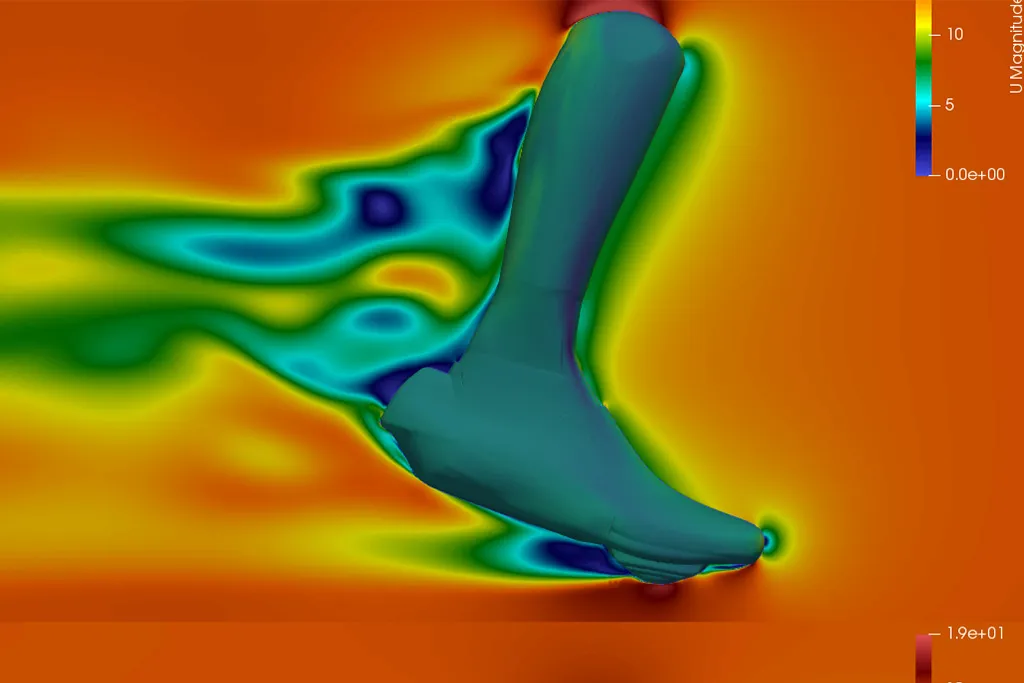
As already noted, VeloVetta claims the Monarch is the first shoe to be designed using CFD (computational fluid dynamics) modelling, which is akin to a virtual wind tunnel.
The use of such software is increasingly common with aerodynamic cycling kit, such as aero road bikes, wheels and aero road helmets.
POC’s latest time trial helmet, the Procen, was designed using CFD modelling, for example.
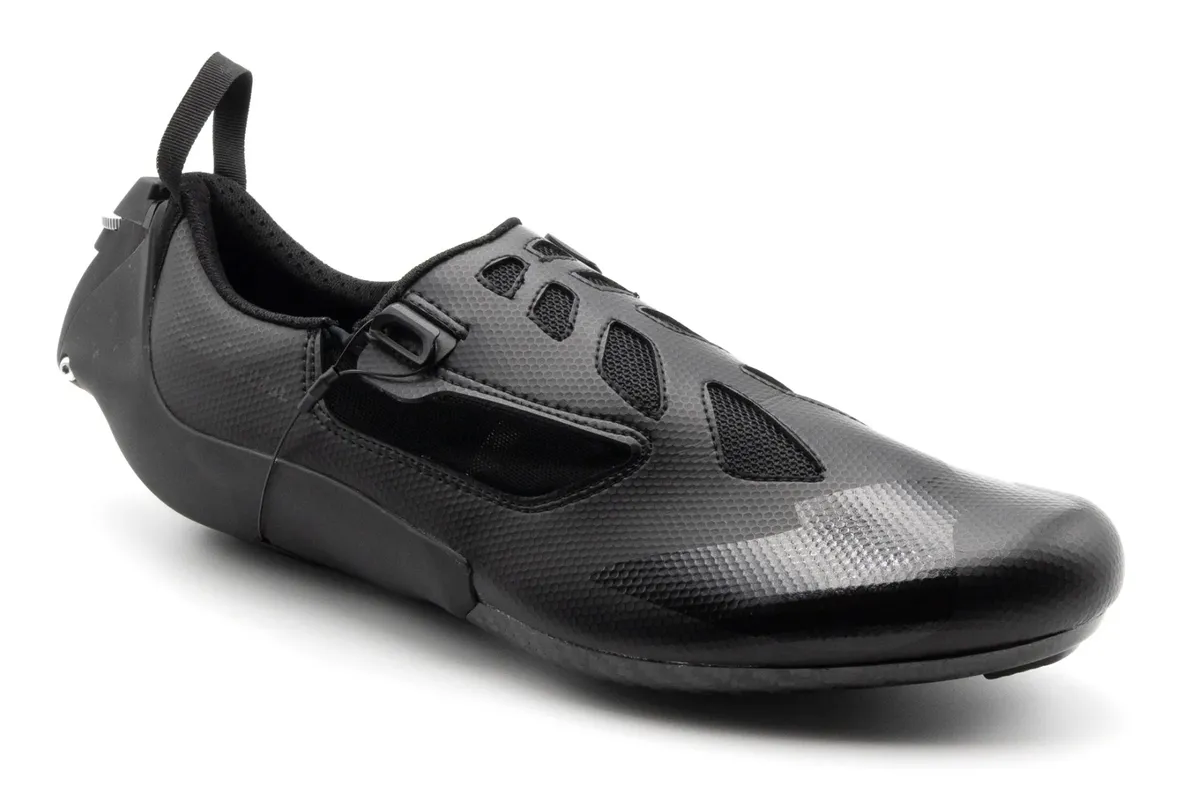
The Monarch’s design features a slim frontal area, with no rotary dials or laces to disturb the airflow, while the retention system has been moved to the rear of the shoe.
The latter is a similar strategy to that employed by the Bontrager Ballista Knit shoe, although in the VeloVetta Monarch’s case, the rotary dial is more cleanly integrated into a composite structure added to the rear of the shoe.
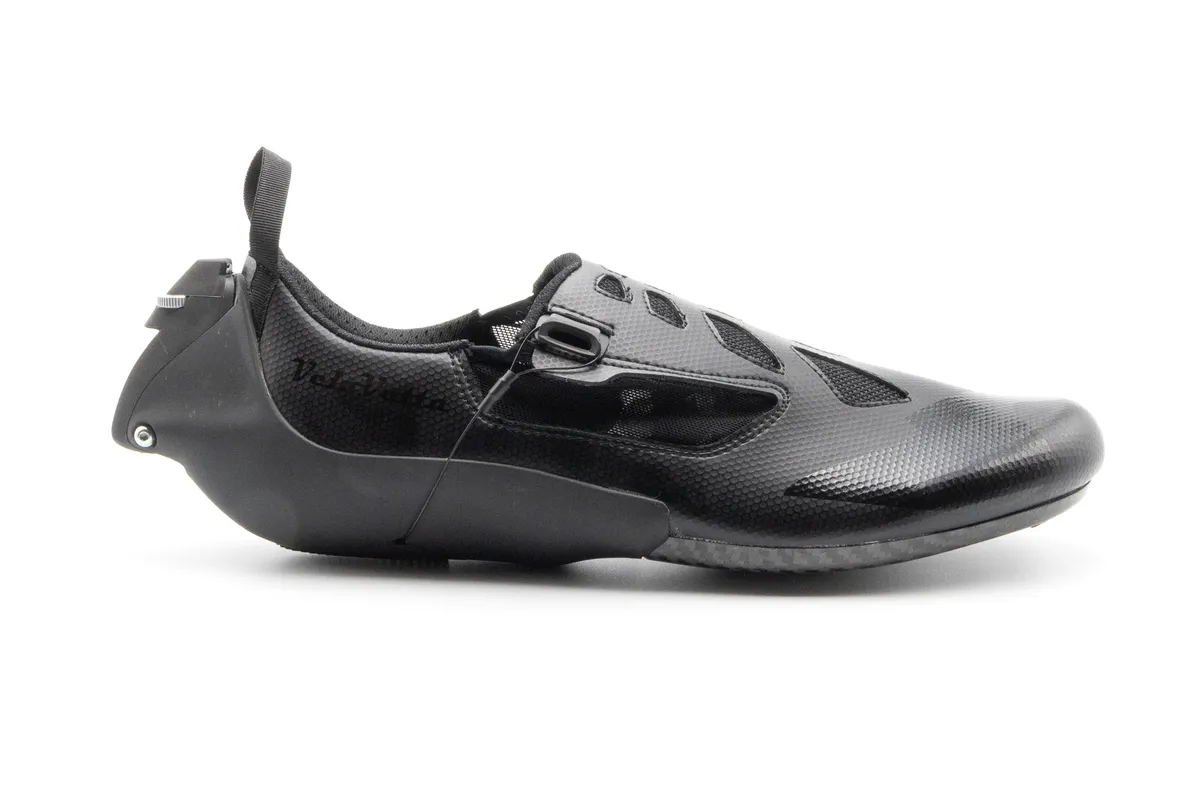
According to VeloVetta, this part is a structural part of the shoe, and not simply a fairing.
This is crucial to ensure compliance with UCI’s technical regulations, although it may nevertheless still fall foul of article 1.3.033.
This regulation states “shoes that have been made more aerodynamic by the addition of a non-essential element or by a modification to the toe or heel are prohibited from competition.”

Of course, few people actually race in UCI-sanctioned events, so this may be something of a moot point for most riders.
That aside, the VeloVetta Monarch uses a carbon sole to improve pedalling efficiency (although the jury is out on whether cycling shoe stiffness actually matters).
It can accept 3-bolt cycling cleats and is available in either black or white, in sizes EU38 to EU47.
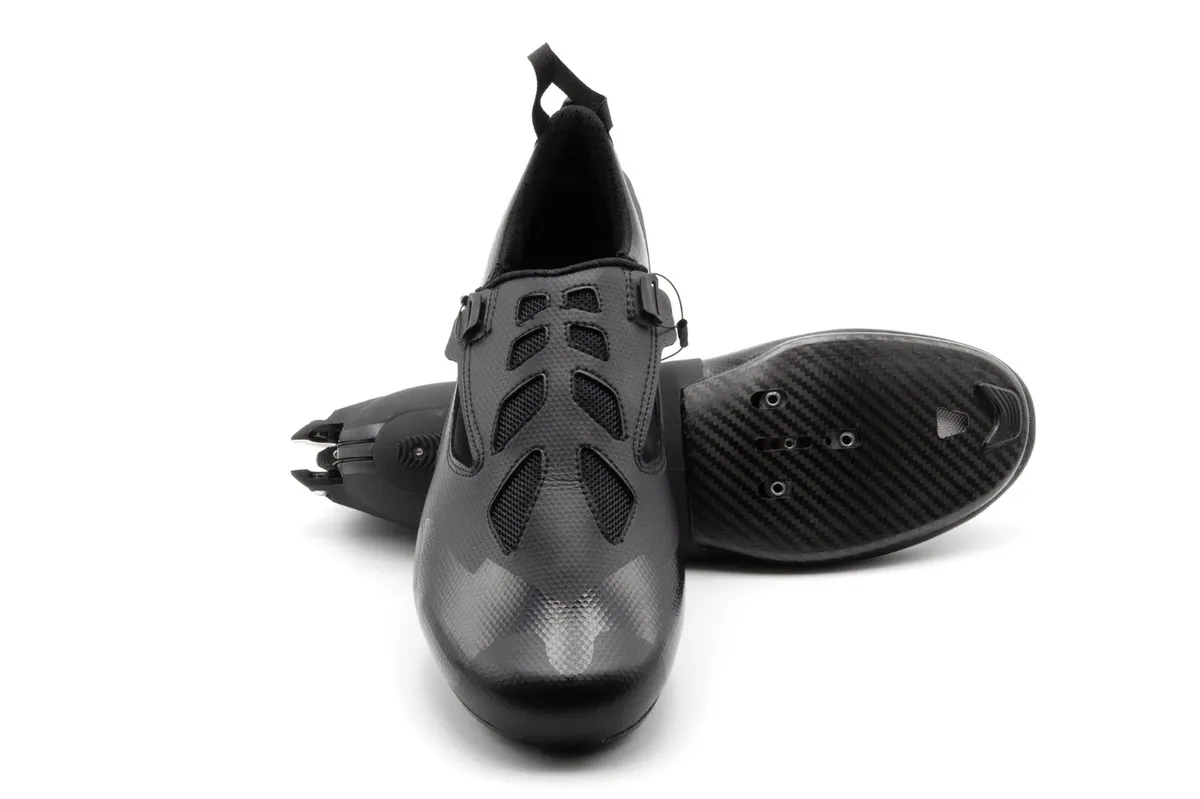
One of the fastest cycling shoes ever made?
According to VeloVetta, the Monarch is one of the fastest (by which it really means ‘most aerodynamic’) cycling shoes ever made.
To demonstrate this, VeloVetta says it pitted a prototype of the Monarch against three other popular cycling shoes at the A2 wind tunnel, in Mooresville, North Carolina.
The three other shoes tested were the:
- Bontrager Ballista
- Shimano TR-9 (a triathlon-specific version of its flagship S-Phyre RC902 road shoes, with velcro straps replacing the BOA dials)
- Specialized S-Works 7
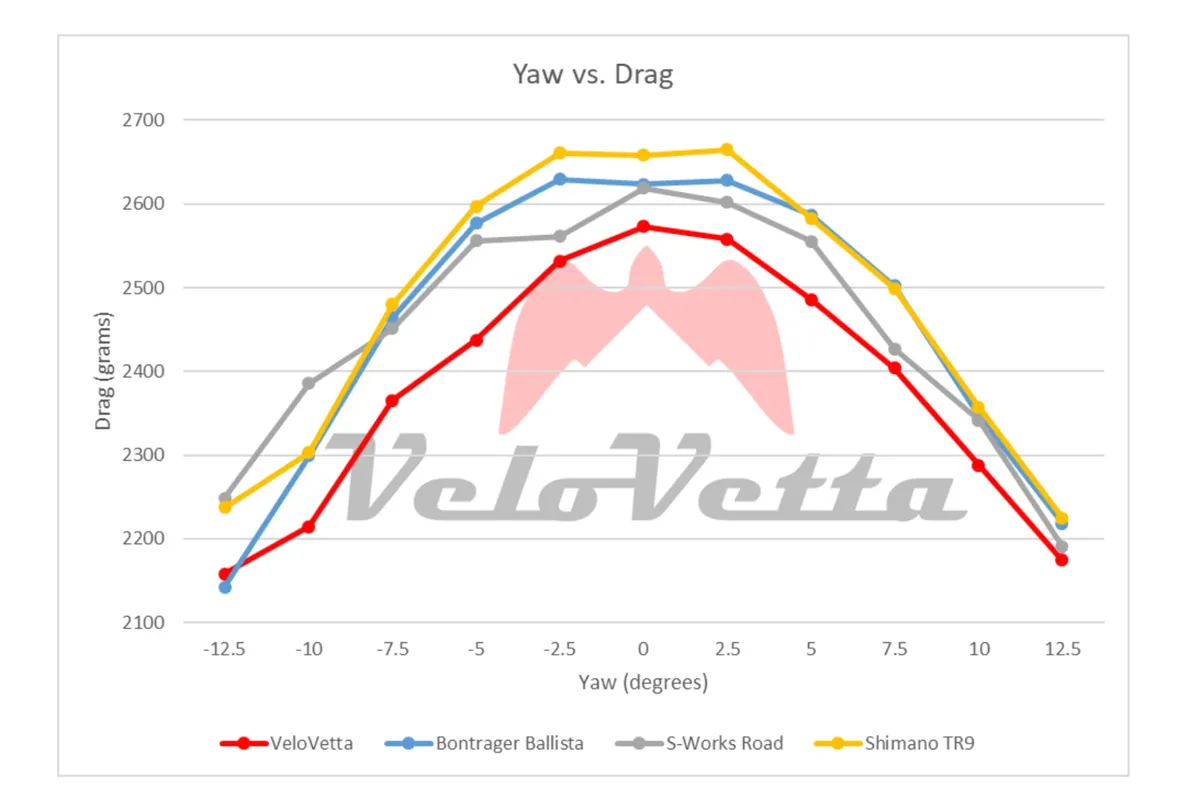
The testing was conducted at an airspeed of 30mph/48.28kph, from -12.5 to +12.5 degrees yaw.
The results show the Monarch to be significantly more aerodynamic than all other shoes on test.
| Shoe | Drag penalty at 30mph/48.28kph (watts) |
|---|---|
| VeloVetta Monarch | 0 |
| Specialized S-Works 7 | 8.6 |
| Bontrager Ballista | 11.5 |
| Shimano TR9 | 14.2 |
According to VeloVetta, these savings can save a rider 32 seconds over a 40km time trial, or 4 minutes and 20 seconds over the bike leg of an Ironman triathlon.
VeloVetta also notes that while the watts saved figures are larger when tested at such high speeds, the same overall reduction in aerodynamic drag can still net riders time savings at slower speeds.
What about other aero cycling shoes?
Though results from the A2 wind tunnel are impressive at a glance, it is worth noting that, of the three competitors tested, only the Bontrager shoe has features specifically designed to improve its aerodynamic efficiency.
While we’re not aware of any other brands claiming to have developed their shoes using CFD modelling, the VeloVetta Monarch certainly isn’t the first cycling shoe that’s claimed to be aerodynamic.

The UCI banned the infamous Bont Crono in 2011, for example, while its Zero+ aero shoe has been part of its range since at least 2010 (Bradley Wiggins wore a set to Tour de France victory in 2012).
The Mavic CXR Ultimate cycling shoe (released in 2014 and since discontinued) and Suplest Road Pro Aero shoe both hide their rotary dials from the wind under integrated zipped covers.

Many lace-up cycling shoes have also been touted for their supposed aerodynamic efficiency.
Wiggins, for example, wore Giro’s Empire SLX shoes for his successful attempt at the UCI Hour Record in 2014.
Specialized also claimed its S-Works Sub6 shoe (since replaced by the S-Works 7 Lace) was 35 seconds faster over 40km than the BOA-equipped S-Works 6 shoe, when equipped with the included Warp Sleeve lace cover.
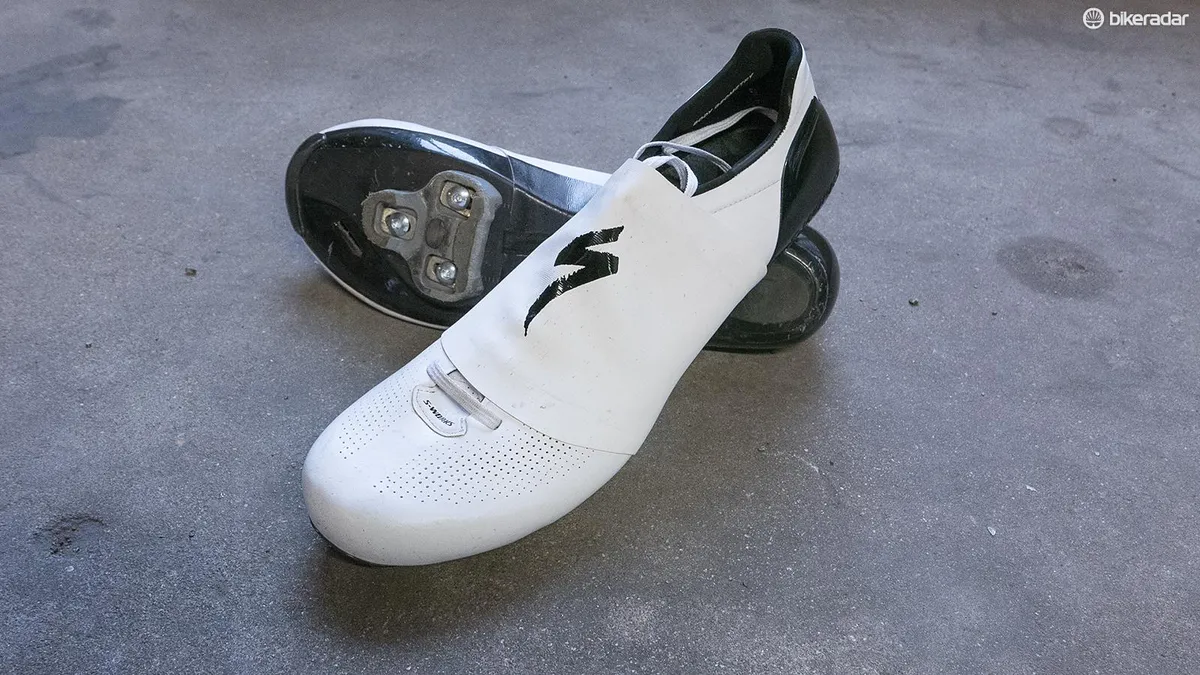
Some of the sport’s top professionals have also been known to wear custom carbon fibre aero cycling shoes.
Former WorldTour pro, Adam Hansen, famously produced his own carbon cycling shoes, for example, while Team GB and Team Jumbo-Visma riders reportedly wear similar custom shoes made by Simmons Racing and Antiloper Cycling, respectively.
Shape is critical
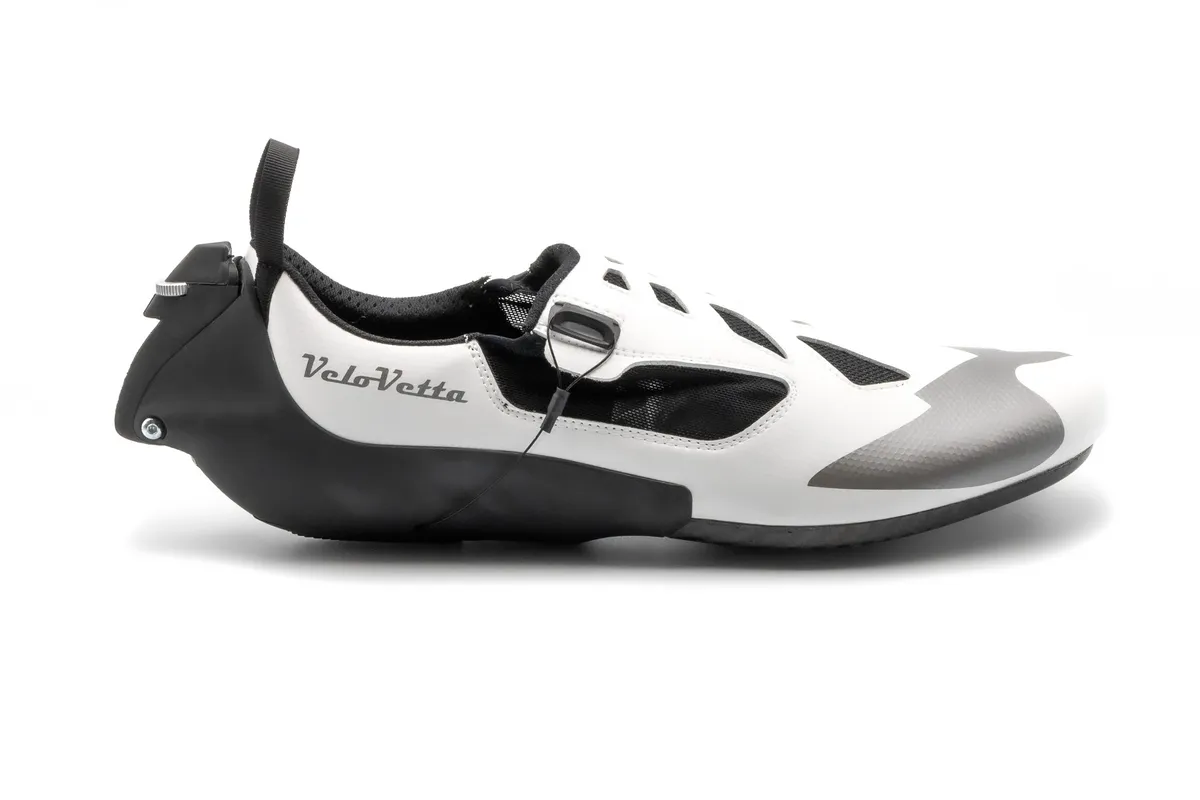
When we put this to VeloVetta, founder Ed O’Malley told BikeRadar that its budget for wind tunnel testing was limited, and comparison models were selected “based on what our likely customers would already be wearing”.
Speaking more broadly, O’Malley noted its baseline model for CFD development was “an idealised conventional shoe”.
O’Malley described this as “a shoe of conventional shape but with a perfectly smooth outer surface with no closure mechanism at all”, which is similar to many of the aerodynamic shoes mentioned above.
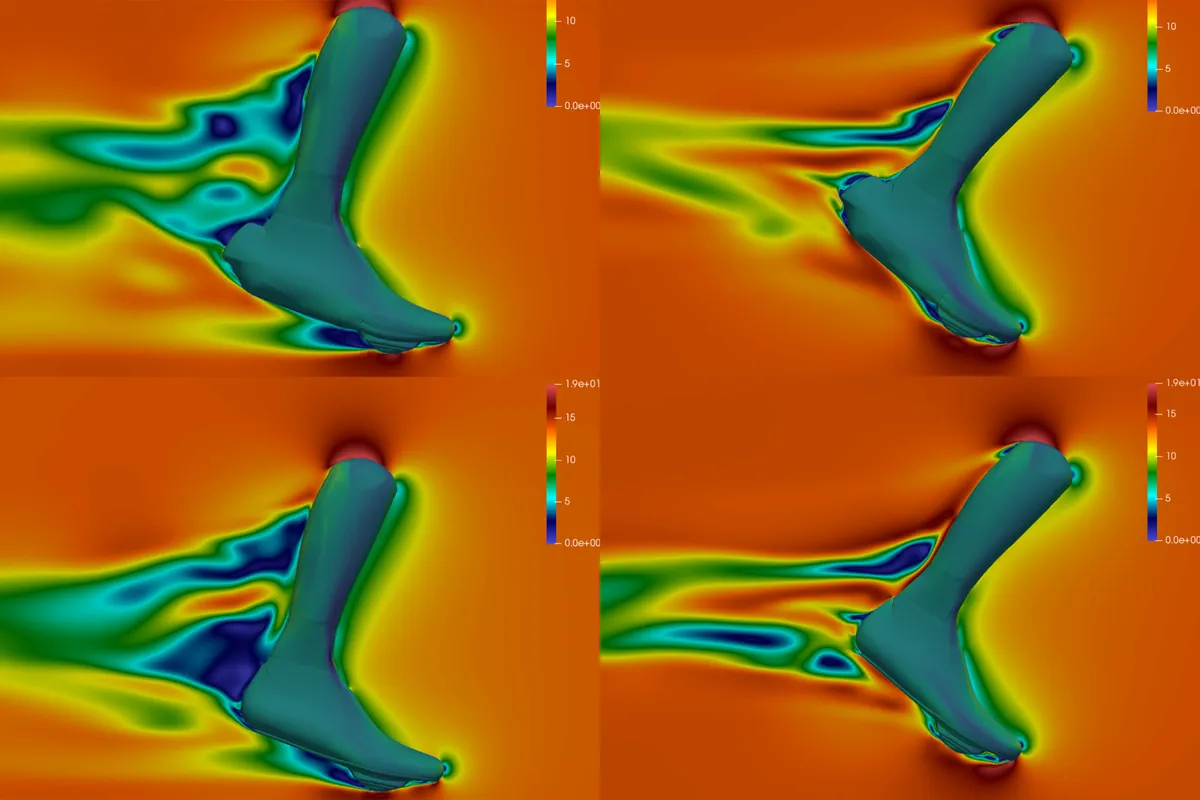
According to O’Malley, such designs are potentially suboptimal as the leading and trailing edges of the shoe are “constantly changing throughout the pedal stroke”.
Because of this, O’Malley says “We spent a lot of time identifying where airflow separates at different parts of the pedal stroke and identifying why that happens.”
As a result, the Monarch is shaped “to delay flow separation at all phases of the pedal stroke while keeping the shoe practical, comfortable and affordable.”
